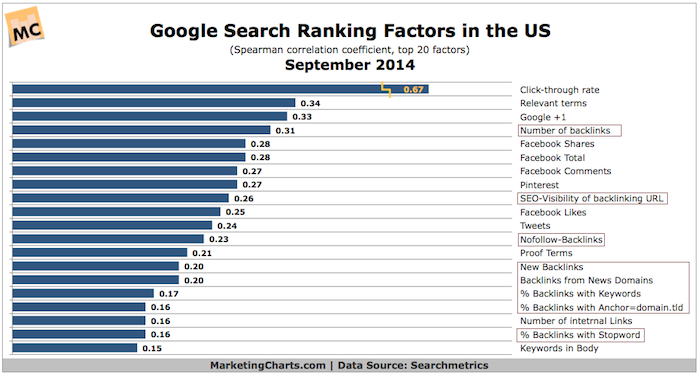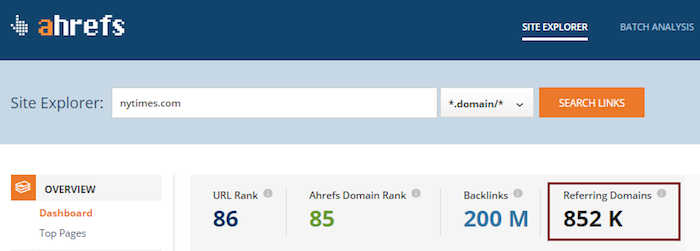
Internet marketing requires you to look at your competition. If you want to do well in search engines and social media, as well as have a powerful website, then it is not optional to do competitive analysis before you begin.
In order to do this, you will need a number of Internet marketing tools to dramatically speed up the process.
There are many factors that can be used to judge how well you are doing, and the options can be overwhelming. If you want a very quick tool, check out marketing.grader.com from HubSpot. It looks at factors such as blogging, social media, SEO, lead generation and mobile. If you want to dig deeper, using these methods regularly will ensure that you stack up against the competition.
Size isn’t everything but it truly matters
Quality of content and engagement are cornerstones of real online marketing, but the best way to get a quick fix on your situation is by looking at the size of various factors such as:
- Number of pages on your website that are indexed in Google
- Number of backlinks (specifically the amount of referring root domains)
- Number of social shares of your top content
- Amount of keywords driving traffic to your site
- The value of your keywords if you paid for them in Google Adwords
- Unique visitors
Let’s dig into how you analyze each of these and what tools you will need.
-
Number of website pages
In order to check the amount of pages that you have indexed in Google, you can use what is called an operator. If you search Google for “site:yourdomain.com,” it will give you the amount of pages that Google knows about, or has “crawled” with their robot.

Imagine you were starting a blog about news and wanted to be the best blog out there. If you didn’t know that the Huffington Post had 5,760,000 pages indexed in Google, you might be less likely to explore a deeper niche where you can compete more seriously.
Always keep in mind, that the competitors you think about on a regular basis might not be the only competitors to worry about. If you search Google for the top keywords you would like to be ranking for, and somebody much larger than your local business comes up ahead of you, they are definitively in your way.
For example, if you are a local business that helps people plan their weddings, and the site ranking above you for a keyword like “wedding planning Boston” happens to be your much larger competitor known as theknot.com, it would be hard to ignore that.
While it is not very likely that you are going to compete with having hundreds of thousands, or even millions of pages indexed in Google, it is important to look at why those top sites are ranking. You can see from the screenshot below that theknot.com has some excellent categories indexed in Google such, as their blog.

If you click the next button at the bottom of Google, you can continue to explore the various pages that Google has indexed for The Knot. If you want to go deeper in looking at their content, tools like Screaming Frog allow you to download their site map into Excel, along with the HTML title tags, so you can see what pages and topics they are covering.
-
Number of backlinks
Link building is one of the most misunderstood tactics of Internet marketing. Think of it more like public relations, because you are trying to get coverage for your valuable content and expertise.
The following chart from marketingcharts.com, based on the world famous Searchmetrics study, shows the search engine ranking factors for 2014. Out of 20 main factors influencing search rankings in Google, almost half of them (8), have to do with back links.

Back links need to be on your front burner, and here’s how you can check them quickly. Go to ahrefs.com and type your URL, or the URL of one of your competitors, and hit the search links button. It will show you the authority levels of your URL and your corresponding domain rank. This is how important your website is based on the amount of high quality, versus low quality backlinks.
You can look at the overall number of back links, but it isn’t worth much because it factors in many links from one website. For example, if a website links to you in their footer on every single page, then the overall amount of back links to your site is skewed by many links from that one site.
There is a small amount of added value by getting multiple links from one site, such as getting featured regularly on The New York Times, but for the most part, we look at the number of unique and high quality referring domains as the most important factor. You can just look at the overall amount of referring domains for now to keep it simple.

If you want to get a little more advanced, then I suggest you check out the “top pages” feature to see what pages on your site, or the sites of your competitors are drawing in the most amount of links.
-
Number of social shares
Ahrefs also has a great feature that lets you track the amount of social shares to your website. Just to the right of the referring domains, when using the method above, you will see the following list of shares of your content. The amount of shares for the New York Times and their content overall (at least according to this tool) is as follows:

If you want to see what content specifically gets shared the most, then you can use the top content feature. This shows the amount of social shares to specific pages on a website. You can use it to get ideas of what content has resonated well with people and engaged them enough to make them share it.
The following are the most shared pages on The Huffington Post:

-
Amount of keywords driving traffic
Search engines work largely on keywords; therefore knowing the amount of keywords that are ranking for your domain is a critical factor. I use SEMrush.com for this. Just type in your domain name, or that of your competitor, and it will show you the number of keywords driving traffic, the estimated amount of traffic (although I find compete.com to be more accurate, even though neither one shows your exact analytics data) and the value of your traffic.
By clicking on the organic research item in the left navigation, and then clicking the word positions, you can see the actual keywords that are sending traffic to the site. The following are just a few of over 1 million keywords driving traffic to etsy.com.
I clicked on the top white arrow above the cost per click (CPC) column to sort the keywords by the most expensive (if you had to buy them in Google Adwords). You can also use the filter feature to exclude brand names or even focus in on certain topics.

The most authoritative sites have a high volume of keywords driving traffic.
-
The estimated value of your traffic
SEMrush also calculates an estimated value for the keywords that are driving traffic to your website. This is an extrapolation, but it’s really interesting to see how you stack up to your competitors.
Etsy receives organic traffic from Google that would have cost $7.4 million a month, if they were to pay for it in Google ads.
The size of your traffic value is a good indicator of whether or not you are taking full advantage of organic search. One take away here is that you have to optimize for quality keywords and topics that matter from a monetary perspective.

-
Number of unique visitors per month
I have never been fully satisfied with the tools that estimate unique visitors, but compete.com is one of the best and most commonly used.
All you have to do is go to their website and type in your domain name, or the domain of your competitor, to see how many estimated monthly visitors the websites are getting.
Competitive spying tools do not have access to your real analytics data, so these are just estimates. I usually find that these tools radically underestimate the number of unique visitors. With that said, these tools are accurate in a more relative sense. So if it shows that your competitor is getting more traffic than you, then that is probably true, even if the exact numbers are not.
Below is the estimate for Etsy’s monthly unique visitors.

How to make your size work for you
You can’t be the top kid on the block if you don’t command a strong web presence. If you think your website is good but you haven’t looked at these types of factors or compared your site to your competitors, then you are being overly subjective.
The cold hard facts are sometimes what we need to help us put a more concrete plan into action. If you want more leads from the Internet and more authority, then the size of these 6 important factors, and working on improving them, need to be on your short list.
A few next steps to take, if you find your website doesn’t measure up
- Create an editorial calendar and content marketing plan.
- Create a deeper resource section on your website.
- Make a greater commitment to your blog.
- Create a variety of content such as blog posts, resource pages, videos, podcasts, ebooks and infographics.
- Create content with the intention of getting it shared and linked to.
- Use social media to make people aware of your content.
Remember that the best way to eat an elephant is one bite at a time, so it is ok to take small first steps.
How much do you think size matters and what matters more?
